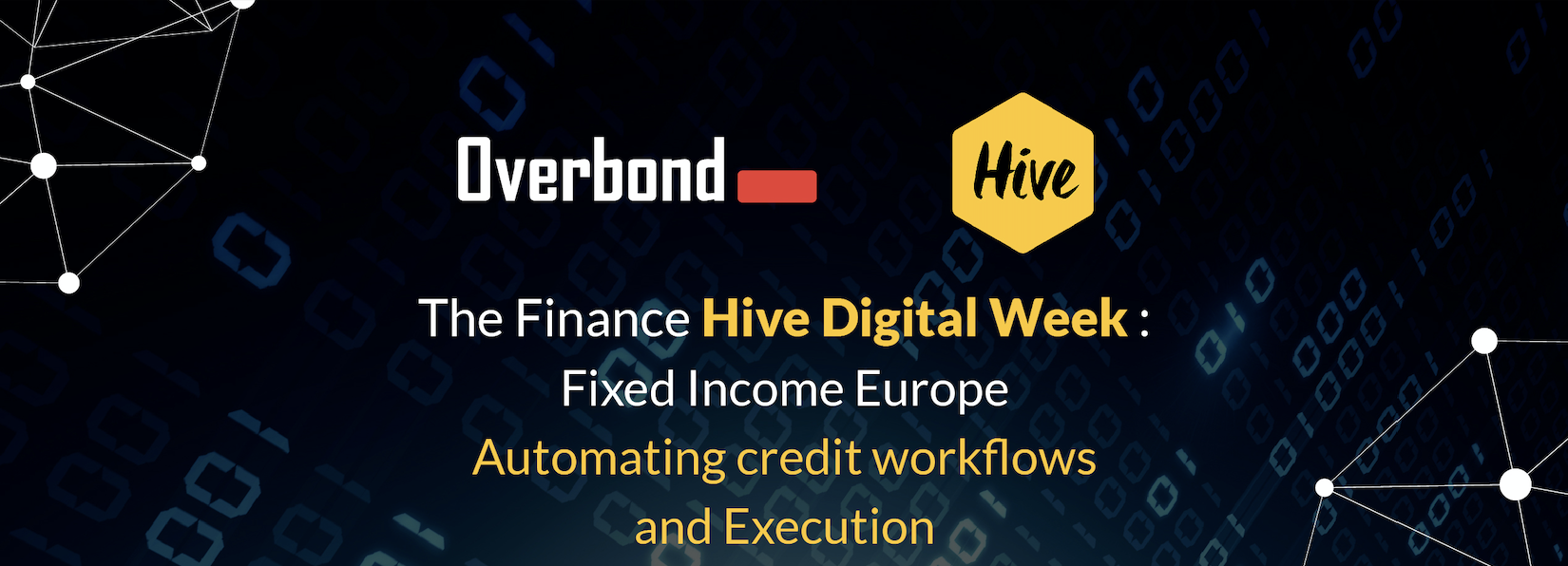

Fixed income automation and AI: buy-side traders discuss the new standard
Buy-side fixed income trading desks allocated 41% of their overall budget to technology in 2020 after slowly increasing this amount over the years, according to Coalition Greenwich . And the technology being used on trading desks is becoming more sophisticated. In January 2020, Coalition Greenwich reported that 61% of fixed income market participants said they were either using AI or planned to in the next 12 to 24 months.
At the same time, electronic trading in the bond markets has become firmly entrenched and continues to grow. Major electronic bond trading platforms reported record trading volumes in 2020 and, more recently, Coalition Greenwich reported that in March 2021 a record average of $11.5 billion per day of U.S. corporate bonds traded electronically.
It’s against this backdrop that The Finance Hive partnered with Overbond, Tradeweb , and MarketAxess to host The Finance Hive Digital Week: Technology on the Trading Desk, a series of peer-to-peer discussion-based forums that took place June 15 - 16, 2021.
Among the sessions was a forum of seven head traders from major global asset managers, including Goldman Sachs Asset Management , Credit Suisse , NN Investment Partners , Schroders , HSBC Asset Management , AXA Investment Management , Vontobel , KBC , ZKB , BHF, and Jupiter Asset Management , to name a few. Session was moderated by Vuk Magdelinic, CEO of Overbond. During the forum, participants discussed the automation of credit workflows and execution, and how the buy side is realizing the benefits of low-touch and no-touch from liquidity aggregation through to trade execution.

Low-touch and no-touch trading are becoming the industry standard for trade execution on successful fixed income trading desks. The conversation no longer centres around whether automated trading is possible or whether it should be used, but around more technical issues related to its implementation and optimized use.
Topics discussed included which workflows can and should be optimized to maximize efficiencies, what data infrastructure and data sources are crucial to enhance pre-trade price discovery and execution, how desks can automate alternative protocols beyond the RFQ and how traders can be given more control over the rules and styles of execution.
This level of discussion is remarkable, considering the automation of bond trading was virtually impossible as recently as few years ago. It’s been made possible through the development of AI models that can price fixed income securities and score their liquidity, an increase in speed resulting from advances in cloud computing and the development of protocols that allow for data aggregation and increased interoperability of the systems used in trading workflows.

There’s been tremendous progress in the development of AI algorithms capable of pricing illiquid fixed income securities and scoring their liquidity – both of which are necessary for the automation of bond trading. Overbond’s AI, COBI-pricing LIVE, for instance, generates prices and liquidity scores for more than 100,000 fixed income instruments and builds curves for more than 10,000 issuers in various real-time liquidity scenarios.
AI-driven suites can automate trade flow, improve liquidity risk and improve price monitoring and reporting. They can help portfolio managers discover discounted and premium-priced bonds, determine where they can get the best roll-down and the best carry, determine the best place to be on the curve and help identify tactical relative value opportunities.
On the sell-side, they can help traders respond to 80% to 120% more RFQs, maintain an optimal hit ratio and significantly increase desk P&L. Leading-edge AI now works for trades of any size and with varying liquidity profiles.
But it was the arrival of fast serverless cloud computing that helped the algorithm mimic a human trader in real time. Refresh rates of three seconds are possible using solutions built on Amazon Kinesis Data Analytics and Amazon Web Services (AWS) Lambda, which supports parallelization. This refresh rate has proven to be fast enough to allow buy-side and sell-side trade execution desks to fully automate 30% of their RFQs and execute an additional 20% with trader supervision.

Of course, these AI algorithms derive their precision from ingesting vast amounts of data, so interoperability is imperative. For example, the full interoperability of an AI suite via bilateral REST APIs will allow its AI algorithms to ingest, aggregate and process data from live and historical vendor composite pricing feeds, internal historical records on executed transactions, dealer axes and runs available, OTC settlement layer volume and voice transactions records. And trading desks can use recorded transaction history to train the models according to the trading style of the desk.
As most buy-side firms don’t have scalable in-house resources to develop their own AI trade automation systems, interoperability is also important when it comes to integrating a new AI system into the workflow of the desk. To do so, the AI suite must be interoperable with the existing OMS, e-trading system, direct venue connectivity and cloud or on-premise solution the desk is currently using.
With these advances in AI capabilities, speed and interoperability, desks can harness unprecedented analytics, integrate them into their workflow and facilitate the automated trading of credit – which is sure to become a mandatory capability on competitive desks.

